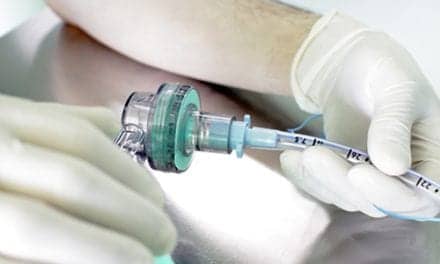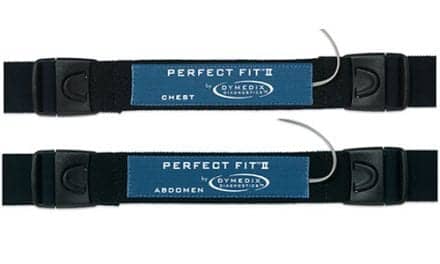Proper airway management is a critical consideration in treating ICU and chronically ill patients. RT Magazine convened a group of respiratory therapists to discuss clinical issues in airway management and to provide their insight into what intubation practices yield positive patient outcomes. Contributing to the discussion were:
- Mark Grzeskowiak, RCP, RRT, FAARC, registered respiratory therapist (Long Beach, Calif)
- William Howard, MBA, BSRT, RRT, respiratory care coordinator, Brigham and Women’s Hospital (Boston)
- Kenneth Miller, MEd, RRT-ACCS, RRT-NPS, AE-C, educational coordinator and dean of wellness, respiratory care services, Lehigh Valley Health Network (Allentown, Pa).
RT: Can you talk about the importance of proper airway management and oral hygiene practices for intubated patients in order to prevent and reduce hospital-acquired infections like VAP?
Grzeskowiak: The swallowing and cough mechanisms are compromised in any patient who has an artificial airway in place. In a critical care unit, these patients are routinely sedated which could blunt their protective airway reflexes. These factors place them at risk for microaspiration and development of VAP. Routine oral/airway care has been shown to be an effective preventative tool and is recommended as a standard of care by many professional associations. Patients tell us that it also a comfort issue.
Howard: A range of clinical problems have the potential of occurring without proper airway management and oral hygiene practices. These include pressure ulceration, accidental extubation, tracheal ischemia and necrosis, and microaspiration of contaminated secretions. It is microaspiration that is a precursor to VAP. VAP, VAE, or other acronyms describing hospital acquired pneumonia has historically been reported to occur in 350,000-500,000 patients per year. With claims of zero VAP/VAE, one should ask how or if this is possible?1,2 Answering that question is well beyond the scope of this Q&A but steady ground appears to have been made—at least in the reported literature.
Without question though, proper airway management in general, including proper oral hygiene, (one element of the popularized “vent-bundle”), is claimed to have favorably reduced the incidence of VAP.3,4
Miller: Preventing ventilator-associated pneumonia is of very high importance. VAP increases mortality and morbidity in the ventilation patient. It is also associated with increased ventilator duration that is responsible for increased complications and costs. VAP bundles and protocols can reduce the incidence of VAP if applied appropriately.
RT: As for the above, do you believe it is a combination of clinician expertise, department protocols, and the right technology/product or does one of these factors have a greater effect on preventing/reducing infections?
Grzeskowiak: Providing oral care is not a difficult task to learn and staff can develop the needed “expertise” very quickly. I am not aware of any studies that have shown one product to be superior to any other but there is one practice that seems to be key to the success of an oral care program. That key is to make oral care the responsibility of one group. When oral care is a shared responsibility, it’s too easy for one group to rely on the other to provide the oral care and, too often, it doesn’t get done. A hospital can purchase the best products available but what’s the point if no one uses them? When one group is accountable, the oral care will be provided and patients will benefit.
Howard: I am not convinced that we can yet claim to have universal ‘clinician expertise’ responsible for preventing or reducing VAP/VAE. I say this because VAP/VAE has not been eradicated. Until recently, the expertise to combat VAP/VAE included consistent compliance with the vent-bundle elements. We had strict compliance but fell far short of any claim to successful elimination of VAP/VAE. We reported, in a poster session at the 2014 AARC Open Forum, a VAP rate that continued to climb for several years beginning in 2009. Each subsequent year was higher than the previous one until it peaked in 2013. Vent-bundle practice was being monitored and demonstrated strict compliance yet our VAP rates continued to increase. The rate was perceived to be low but we had about 300 patients annually who acquired VAP.
At the end of 2013, while continuing to demonstrate strict vent-bundle compliance, we made one intervention. This intervention was a hospital-wide change that eliminated standard cuff checks in favor of continuous cuff regulation. With this practice and for more than one year, we have seen a sustained reduction in VAP/VAE, by about 40%. This is not unlike a 50% reduction in VAP reported by Nseir using the same concept of continuous cuff regulation.5
The combination of clinical expertise and technology are factors in preventing or reducing infections; infections limited for the purpose of this discussion to the lower airways resulting from practices or the lack thereof within this limited focus. Frankly, I have seen clinical practice changes that include adopting improvements in technology concurrent with protocol adaptation. Tube holders is one example that continues to be a subject of debate; many clinicians favoring these over taped artificial airways but with some evidence that holders may not be the holy grail in preventing pressure ulceration.
Miller: It is well documented in the literature that VAP bundles, which include bed elevation, oral care, daily spontaneously breathing trials, and early ventilator liberation—reduce incidents of VAP. Subglottic endotracheal tubes also reduce the likely of VAP by preventing the development of refractory biofilm that breeds bacteria proliferation.
RT: How does airway management differ for pediatric and neonatal patients and what factors should RTs be aware of when intubating and managing artificial airways for these smaller patients?
Grzeskowiak: The incidence of unplanned extubation in infants and peds is much higher than it is in adult patients. Many of these incidents reportedly occur during routine care (bathing, turning, repositioning or resecuring the airway). Unplanned extubations can be avoided if one person is designated to maintain the airway during these procedures.
Oral care for VAP prevention is controversial because no infants and only older peds patients have teeth and develop the dental plaque and oral flora that are contributing factors. The endotracheal tubes of these patients rarely have an inflated cuff so damage to the tracheal mucosa from an improperly inflated cuff is less of a concern than in adult patients.
Howard: Numerous factors are common to managing the artificial airway, regardless of age-group, starting with proper humidification and suctioning techniques. As far as VAE/VAP prevention, following vent-bundle practices is applicable in this population who are also very susceptible to this iatrogenic complication. Pediatric and neonatal patients have similar rates for hospital-acquired pneumonia. They also have the same potential for accidental extubation and tracheal damage. Techniques, clinical tools, and protocols not dissimilar to those employed with adult patients are useful and recommended for combating these problems in the very young patient.
All patient groups are susceptible to mismanagement of the cuff. Inflation practices that are typically once a shift are grossly inadequate in preventing secretion migration into the lower airways. Well before the next scheduled ‘cuff check’ one can expect the need to add more air to the cuff to prevent insufficient pressure necessary for maintain a cuff to tracheal seal. Unfortunately though, the time to prevent secretion migration has passed when the clinical signs demonstrate the need for adding air to the cuff.
Excessive cuff pressure is another common problem. Combined with the cuff deflation problem, this suggests the need to heighten surveillance. Even more effective, is to consider embracing technology that offers consistency that intermittent cuff checks fail to provide.6,7 One might argue that this is not relevant with neonatal patients because they use uncuffed tubes. Not so fast! There is growing evidence that with the problematic rates of VAP and concern with tracheal damage, reports are surfacing about the reintroduction of cuffed artificial airways for this age group— with no rise in morbidity compared with uncuffed tubes.8,9
Miller: In this patient population the development of dislodged or obstructed endotracheal tubes is common. In addition, any airway swelling that is the result of intubation will be problematic post-extubation. These airways must be secure very tightly and the location of the airway needs to be clearly documented.
Often in the smaller pediatric patient or neonatal patient a cuffless tube is utilized and thus airway movement can occur frequently. Using the correct size endotracheal tube is critical to prevent too large of a leak, but also not to cause airway trauma.
RT: Do you have any experience with silver-coated ET tubes and what are your thoughts on their value (quality vs cost) on patient outcomes?
Grzeskowiak: I have no experience with silver-coated tube but am aware of Dr Kollef’s work showing them to be cost-effective. I am also aware of one in-vitro study that showed a tube costing less than $2 maintained a leak-proof seal for 9 days when sterile lubricating gel was applied to the tube’s cuff. I would recommend following the evidence-based recommendations first before using anything that dramatically increases the cost of patient care.
Howard: My experience with these tubes has only been in their evaluation and literature search, and weighing the cost against the suggested benefits. Comparing this ETT to alternatives is not necessarily convincing. The outcome aimed at lowering infection rates using a host of techniques (vent bundle compliance), airway management (proper and consistent cuff pressure, subglottic suctioning) may be as effective. According to a 2010 article by Afessa (et al) in CHEST, suggest that a silver-coated ETT was associated with reduced mortality in patients who developed VAP. However one might consider an interesting response to this article in the observation by Deem that silver-coated tubes were associated with increased mortality in patients without VAP.
Miller: Our institution did conduct a trial with silver coated endotracheal tubes but found them not as effective in reducing VAPs as well as the subglottic endotracheal tubes. Also there was a risk to the patient if a MRI needed to be performed secondary to the metal. All our trauma patients are MRI to rule out cervical spine injury.
RT: What advantages do subglottic suctioning ET tubes offer to respiratory therapists and what is their impact on improving patient care and infection control?
Grzeskowiak: I am aware of a few studies conducted several years ago that showed these tubes to be effective at reducing VAP rates. I would point out that the way in which VAP was diagnosed has since been shown to be, scientifically speaking, neither sensitive nor specific. Unless these studies have been repeated using the new VAP diagnostic criteria, this would call into question, the strength of any recommendations for use of those tubes. It’s my opinion that following current recommendations (ie daily weaning evaluation including sedation holiday, routine oral care, etc) can greatly improve patient outcomes without increasing the cost of patient care. Also, see comments above on silver-coated tubes.
Howard: Endotracheal tubes having continuous subglottic suctioning are reported to reduce VAP/VAE. However, they are more expensive than standard endotracheal tubes. The literature suggests that there are both benefits, which are countered by higher costs and complications. Unfortunately, cost effectiveness data are lacking for these ETTs designed to prevent VAP. Despite numerous studies there is insufficient evidence upon which to base strong recommendations, and important safety concerns remain regarding the use of some devices. The randomized trials of subglottic suctioning found no effect on ICU length of stay, confirmed by meta-analysis of intention to-treat data.
Miller: We have utilized subglottic tubes at our institution for the past ten years. They are easy to maintain and our VAP rated was reduced secondary to their application. The suction and patency of the suction line is check every four hours when our RRTs perform their ventilator checks. Utilizing these tubes along with other VAPs bundle application has reduced our VAPs rate to almost zero.
RT: Can you talk about the importance of tube holders and tapes for maintaining the seal/cuff and what precautions should RTs take to prevent microaspirations from penetrating the lungs?
Grzeskowiak: I don’t think there is a great deal of difference in the safety of one securing device compared to another. I think the securing method that maximizes the effectiveness of the oral care process is the one to use. I know one physician who will not allow a particular commercially-available device to be used on his patients because he thinks it contributes to unplanned extubation (not sure if the literature supports this contention). Untaping and retaping the ET tubes of these patients makes doing oral care a very long process.
Howard: Tube holders and tape are not intended to maintain the seal of the cuff against the tracheal wall whereas appropriately sized artificial airways and proper cuff inflation does.
Specific to cuffs and sealing of the airway, consider that cuffs are prone to leak and require up to 12 interventions daily to maintain the recommended cuff pressure in adult patients, which is between 20-30 cm H2O. (In the neonate where cuffed tubes are used, the recommended pressure is < 20 cm H2O e.g.10-15 cm H2O). Add to this the lowering of cuff pressure by up to10 cm H2O with each cuff check. If the cuff were in fact at proper inflation pressure of 25 cm H2O for example, performing a cuff check with standard technique will decrease pressure sufficiently to allow contaminated secretions to enter the lower airways.
Numerous authors have reported that a very effective tool for preventing microaspiration is to use the strategy of not allowing the cuff to deflate; ie maintain cuff pressure in the recommended range. As noted above, continuous cuff regulation is an effective tool that provides this practice. In terms of effectiveness, Nseir and others have reported the absence of pepsin and amylase, clinical markers for aspiration, when comparing standard cuff inflation practice against continuous cuff regulation.
Miller: Maintaining the proper cuff pressure and position is vital in helping prevention mircoaspiration. Several ventilators now feature a device to maintain a desired lateral wall pressure by insuring constant inflation. It is important that during intubation that it is noted if the patient aspirated, if so, the proper antibiotics can be started to help minimize infection. We use a commerical tube holder that helps allow easy movement of the tube and also minimizes skin breakdown.
RT: Are products and manufacturers responding to the need for healthcare facilities to reduce costs? What factors should facilities weigh when choosing their specific type/brand of ET/trach tubes?
Howard: Manufacturers have responded to reduce healthcare facility costs. On surface they appear to be adding costs with more expensive ETTs as an example. However, if you take the position that by adding or investing expense reduces cost by lowering the length of stay, fewer antibiotics, x-rays, lower re-admission rates, then the investment is worth exploring.
This requires an expansive explanation but at the very least we might all agree that manufacturers have provided products to address our clinical concerns. Sorting out the financial benefit is arguable if short-sighted annual expense budgets remain the focus rather than broadening overall costs to include all of the variables.
When choosing a brand of ETT, compare the cost of a standard ETT against the cuffs made with polyurethane. The latter is significantly more expensive—as are silver-coated and continuous subglottic suction ETTs.
Upfront costs need to be weighed against measurable outcomes, including financial penalties for early readmission, ICU length of stay, morbidity, and mortality. There are numerous articles on these issues; articles that may reward the reader with answers to these complex questions about cost vs benefit. The difficulty is predicting whether a patient will avoid a VAE/VAP by using more expensive products, or if they will avoid these problems by clinicians better trained in the use of standardized product and techniques.
Miller: Yes, there are multiple products available to help reduce the incidents of hospital-associated infections. There are several specialized endotracheal tubes, oral care, and other bed devices that help the clinical team adhere to their institutional bundles. Cost/benefit ratio needs to be factored into the purchase of these specialized tubes or products. However, one hospital-related VAP will cost over $65,000. Even if the cost of these products may be five times the cost of conventional endotracheal tubes, if they can help prevent the infection they will pay high dividends and save money in the long-term, which will improve patient outcomes and family satisfaction.
RT: What changes do you anticipate (or what changes would you like to see) in ET tubes, trach tubes, and related products in the next 5 years? How can they improve over the current generation?
Grzeskowiak: Newer tubes should do a better job of maintaining an adequate cuff pressure. We all know the problems associated with having a cuff under-inflated (volume loss, possible aspiration) and over-inflated (tracheal trauma). Changes in the patient’s body position, ventilator settings and level of sedation have all been shown to alter cuff pressure in an artificial airway. The cuff pressure set by the RT at the first vent check is very likely to change many times over the course of the shift. My car tells me when my tire pressure is low. How about developing something like that for artificial airways?
Howard: Before suggesting changes, it is important to identify the problems. The problems that remain include the following (which is not an exhaustive list):
- Pressure ulcerations continue even with modern tube holders, tape, and fixation devices.
- Hospital acquired pneumonia has not gone away and we are collectively in denial if we believe that it has.
- Subglottic suction has merit in preventing VAP, but do all patients benefit from it’s use considering the expense?
- Patients with tracheostomy tubes have a high rate of returning to acute care facilities from sub-acute care. Subglottic suctioning is not available for this type of artificial airway.
- Excessively applied cuff pressure continues. The literature from numerous professions is very convincing. To convince yourselves conduct a small un-announced spot check in your facility to include patients after surgery or after they have been turned. A timely cuff check will prove this point.
- The traditional cuff check lowers cuff pressure — which allows contaminated secretions to enter the lower airways.
- All devices currently in use to inflate the cuff have the potential of accidental connection to an indwelling catheter. This includes ‘cufflators,’ syringes, cuff pressure gauge assemblies having a stopcock, and even the simple syringe.
Some changes that will be helpful to address the above noted problems include the following:
- Tube holders have a place for securing the airway. This is a step forward beyond securing the ETT with tape. What tube holders and fixation devices have not prevented are lip ulcerations and facial tissue damage. On the former, consider that tube holders do not take the pressure of the ETT off of the lip. Without frequent movement of the ETT based on patient specific needs, pressure ulcers will continue. Additionally, a patient with low blood pressure compared to one with normal pressure may need more frequent re-positioning of the ETT to assure tissue perfusion is not impeded. A nice feature in these products might be a sensor that detects adequate perfusion.
- Subglottic suction is clearly not necessary for all intubated patients. Attempts have been made to make this an add-on feature to ETTs. Further work is necessary to lessen the expense for these products.
- Cuffed polyurethane ETTs have excellent sealing properties and provide this feature at lower cuff pressure than PVC cuffed ETTs. The same type of cuff should be offered for tracheostomy tubes. The patients will have an artificial airway longer than an ETT placement generally so having an effective barrier offered with polyurethane material is reasonable.
- Regardless of tube type properties, clinical practice must change. As noted above, cuff pressure declines dynamically from baseline. Not mentioned is patient turning which compresses the cuff. As reported, turning increases cuff pressure above the recommended 30 cm H2O maximum threshold. With the dynamic changes in cuff pressure that frequently finds this value outside of the recommended range, reliance on automation is a very reasonable evolution that patient should be provided with.
- Preventing small bore tubing misconnections is a National Patient Safety Goal. Cuff-inflation product connections should be re-engineered to prevent this type of problem and the reported consequences (including fatal air embolisms) from occurring.
Miller: Over the next few years I would expect that more emphasis will be placed on preventing the development of bacteria in the and around the endotracheal tube. Also I think endotracheal tube will vary in size and be contoured for the glottis opening, made to fit, versus one size meet the needs for females or males. All ventilators will have an option to regulate and maintain endotracheal cuff pressure via a sensor line. With new technology the endotracheal tube of the future will not be the bad guy of infection. RT
References
- Klompas, M. Ventilator-associated pneumonia: is zero possible? Clinical Infectious Diseases, 51; (10), 1123-1126.
- Rello J, et. al. Prevention of VAP: is zero rate possible? Clinics in Chest Medicine, 32, (3); Pages 591-599.
- Berry AM, Davidson PM. Beyond comfort: oral hygiene as a critical nursing activity in the intensive care unit. Intensive Crit Care Nurs. 2006;22(6):318-328.
- Kollef MH. Prevention of hospital-associated pneumonia and ventilator-associated pneumonia. Crit Care Med. 2004;32:1396-1405.
- Nseir S, et. al. Continuous control of tracheal cuff pressure and microaspiration of gastric contents in critically ill patients. Am J Respir Crit Care Med. 2011;184(9):1041-7
- Nseir, S, et. al. Variations in endotracheal cuff pressure in intubated critically ill patients: prevalence and risk factors. European Journal of Anaesthesiology, 2009; (26): 3, 229-234.
- Blanch P. Laboratory evaluation of 4 brands of endotracheal tube cuff inflator. Resp Care, 2004; 49(2), 166-173.
- Foglia E, et. al. Ventilator-associated pneumonia in neonatal and pediatric intensive care unit patients. Clin. Microbiol. Rev, 2007; 20(3), 409-425.
- Weiss M, et. al. Prospective randomized controlled multi-centre trial of cuffed or uncuffed endotracheal tubes in small children. British Journal of Anaesthesia, 2009; 103 (6): 867–73.
- Bigatello M, et.al. Modifying endotracheal tubes to prevent ventilator-associated pneumonia. Curr Opin Infect Dis. 2011;24(2):157-62.
- Afessa B, Shorr AF, Anzueto AR, Craven DE, Schinner R, Kollef MH. Association between a silver-coated endotracheal tube and reduced mortality in patients with ventilator-associated pneumonia. Chest. 2010;1375:1015-1021.
- Deem S. Increased mortality in patients without ventilator-zssociated pneumonia. Chest. 2010;138(5):1274-1275. Correspondence.
- Deem S, Treggiari M. New endotracheal tubes designed to prevent ventilator-associated pneumonia: do they make a difference? Respir Care 2010; 55(8), 1046-1055.
- Dezfulian C, Shojania K, Collard HR, Kim HM, Matthay MA, Saint S. Subglottic secretion drainage for preventing ventilator-associated pneumonia: a meta-analysis. Am J Med 2005;118(1):11-18.
- Sole M, et. al. Evaluation of an intervention to maintain endotracheal tube cuff pressure within therapeutic range. Am J Crit Care. 2011;20(2):109-17.
- Robertson T, Carter D. Oral intensity: reducing non-ventilator-associated hospital-acquired pneumonia in care-dependent, neurologically impaired patients. Can J Neurosci Nurs. 2013;35(2):10-7.
- http://www.cdc.gov/mmwr/preview/mmwrhtml/rr5303a1.htm
- Quinn B, Baker DL, Cohen S, Stewart JL, Lima CA, Parise C. Basic nursing care to prevent non-ventilator hospital-acquired pneumonia. J Nurs Scholarsh. 2014;46(1):11-9.










